#seven African powers
Explore tagged Tumblr posts
Text
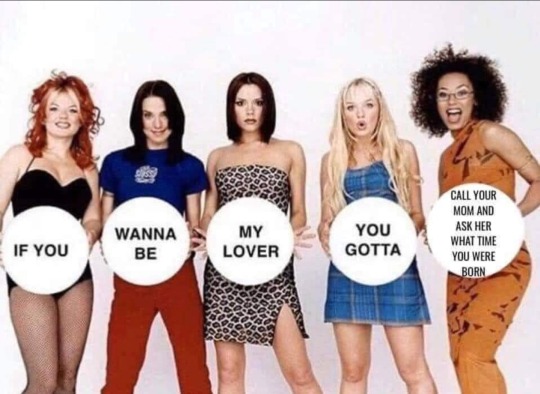
Run me that birth certificate!!!!
#bitchcraft#witches#witch#witchcraft#reblog to cast#witchblr#witchyvibes#witchy fashion#witchythings#witchy#the wicked powers#the wicked ones#seven African powers#cast a spell#love spell#love spells#my spells#birth chart#life partner#spice world#spice girls
293 notes
·
View notes
Text
Friday Four: Embracing Kwanzaa: A Soulful Celebration of Unity, Purpose, and Heritage
#and community. Each year#and more#and purpose for my children and our community. Join me as we explore the heart and soul of this meaningful celebration. ✊🏿🌿💫#connection#culture#families come together to honor the seven guiding principles of Umoja (Unity)#I share how celebrating Kwanzaa has become a powerful tradition in our home#Kujichagulia (Self-Determination)#Kwanzaa is more than just a holiday – it’s a vibrant celebration of African heritage#nurturing a deep sense of pride#reflecting on the past while building a brighter future. In this post
2 notes
·
View notes
Text
I listened in amazement to the story of how the Soviet Union had solved the problems of economic inequality among the various nationalities in a period of 20 years. This accomplishment was all the more breathtaking in view of the fact that many of these nationalities had been nomadic tribes which had not even reached the feudal stage of social development. Many had no written language and lived at a social level characteristic of about 1000 A.D. The professors were somewhat embarrassed that it had taken so long to achieve these results. But, thought I, if within 20 years after the establishment of a socialist America, [African-Americans ]can erase the ill effects of 300 years of persecution and oppression, I, for one, would be highly satisfied. The Soviet achievement was all the more remarkable because it was accomplished during a period which included counter-revolution, civil war and World War II. Furthermore, during these years the Soviet Union had to depend entirely on its own resources.
…
Soviet successes in promoting economic equality of different peoples have been accompanied by achievements of equal magnitude in the sphere of education. Of these, Professor G. Glezerman writes: "An educational newspaper estimated in 1906 that it would take at least 4,600 years to wipe out illiteracy among the Central Asian peoples. According to the most optimistic estimate, it said, the Tajiks, if they survived as a people, could expect to be literate in the year 6500. The Soviet State, however, wiped out illiteracy in the Central Asian Republics in two decades."
…
Before the revolution Bashkira's 198 schools were run entirely by priests. Today the Republic has 5,000 elementary and secondary schools, 60 specialized secondary schools, seven colleges and a university. One out of every four inhabitants is engaged in some form of study. Bashkira has 20 research institutes. Employed in its educational and research establishments are 158,000 specialists, including 54 holding the degree of doctor of science and 777 candidates of science. Before the revolution Bashkira did not even have an alphabet or literary language of its own. Today it publishes about 500 books annually, in a total printing of 3,000,000 copies. It has seven professional theaters, 3,000 cultural recreation centers and 2,000 libraries.
…
Soviet society is not perfect. Old habits are not easily changed; and, even after many years of Soviet power, many ideological problems remain. But only a utopian dreamer or a peddler of dishonest ideas would attempt to blow up minor defects out of all proportion to their place in the totality.
Whatever ideological problems in regard to racial or national chauvinism the Communist Party and the Soviet government have yet to overcome, the central fact is that the Soviet people have shown the world that racism is not inherent in man. They have shown that once the exploiting classes are removed from power, once exploitation is abolished, the various races of mankind can live in peace.
Ghetto Rebellion To Black Liberation by Claude M. Lightfoot (Pages.146-147, 149, 151)
952 notes
·
View notes
Text
Little Richard - Tutti Frutti 1955
Richard Wayne Penniman was an American singer, pianist, and songwriter. He was an influential figure in popular music and culture for seven decades. Described as the "Architect of Rock and Roll", Richard's most celebrated work dates from the mid-1950s, when his charismatic showmanship and dynamic music, characterized by frenetic piano playing, pounding backbeat and powerful raspy vocals, laid the foundation for rock and roll. Richard's innovative emotive vocalizations and uptempo rhythmic music played a key role in the formation of other popular music genres, including soul and funk. He influenced singers and musicians across musical genres from rock to hip hop; his music helped shape rhythm and blues for generations.
Richard was honoured by many institutions. He was inducted into the Rock and Roll Hall of Fame as part of its first group of inductees in 1986. He was also inducted into the Songwriters Hall of Fame. He was the recipient of Lifetime Achievement Awards from The Recording Academy and the Rhythm and Blues Foundation. In 2015, Richard received a Rhapsody & Rhythm Award from the National Museum of African American Music.
"Tutti Frutti" (Italian for "all fruits") is a song written by Little Richard and Dorothy LaBostrie, recorded in 1955, which was his first major hit. With its energetic refrain, and its hard-driving sound and wild lyrics, it became not only a model for many future Little Richard songs, but also for rock and roll itself. The song introduced several of rock music's most characteristic musical features, including its loud volume, powerful vocal style, and distinctive beat and rhythm. In 2007, an eclectic panel of renowned recording artists ranked "Tutti Frutti" at number 1 on Mojo's "The Top 100 Records That Changed The World" and hailed the recording as "the sound of the birth of rock and roll". In 2009, the US Library of Congress National Recording Registry added the recording to its registry, claiming the "unique vocalizing over the irresistible beat announced a new era in music". It was inducted into the Grammy Hall of Fame in 1998.
"Tutti Frutti" received a total of 86,3% yes votes!
youtube
354 notes
·
View notes
Text
Not Exactly the Apple of my Eye
I wrote this for the @haunting-heroes-creative-games WWT Myths game last month, and subsequently co-won my first game!
Figured I'd post it here too, now that all the reveals have happened---have a DPxYJ/DPxDC Snow White AU Crack fic!
===
"You gotta be kidding me," Kon says as he looks down at himself, "this can't be real, right?"
"Feels pretty real to me!" Bart chirps happily, fiddling with his overly large green sleeves.
"Rad." Tim rolls his eyes, crossing his arms and popping his hip and yawning like a disgruntled cat. Sarcasm practically drips from every orifice of his body language, even as he looks 2 seconds away from falling asleep.
"Is this what I think it is?" Cassie yells from further into the room, the sound of a small clamor echoing behind her words.
"If by it you mean some kind of inter-dimensional fucky wucky, then yeah!" Kon waves his arms around, gesturing to the room at large even if she can't see; Tim and Bart can, and that's all that matters. "I think so!"
"No, I mean is this Snow White?" Cassie clarifies as she comes huffing into the room. She too is adjusting her clothes as best she can, trying to figure out what to do with the glasses suddenly on her face.
The four of them stand gathered in the middle of the cottage they've been dumped into, freshly shrunken in height, stripped of their powers and gadgets and suits, and dressed in what seems to be simple cotton peasant shirts and work leggings.
They also have comically large and weirdly soft and sturdy leather shoes, of the Snow White Dwarf variety.
"Aren't there supposed to be seven of us?" Tim mumbles thoughtfully, another yawn causing him to slump and looking mad about it.
"How can you be so calm about this?" Kon huffs, picking up Tim with very little resistance for once and dumping the yawning boy onto a bed labelled Sleepy. Kon himself grumbles as he takes a seat on the next bed over labelled Grumpy.
An angry Kryptonian is not a great idea. Who let this be okay?
"I'm not calm about this…" Tim yawns once more, irritated, "I just can't think straight, I'm too tired."
"You don't sleep on a daily basis though?" Bart walks his way to his own bed, labeled Dopey and test bouncing it. "But it seems fitting at least. Plus, You're not straight anyway. Who's Cassie supposed to be?"
"Doc, I think." Cassie goes to her own bed, looking at it dubiously before deciding to ignore it completely. "He's the only one with glasses right?"
"That…" Tim is curled up on his side now, "still…doesn't answer…"
Soft snores start to drift through the room, another anomaly, considering Tim doesn't actually snore.
"What did the genie lady say?" Bart starfishes on his bed, making snow angels with no snow, "This is all because you decided to hit on her anyway."
"How was I supposed to know?!" Kon angrily pulls the covers off his bed to dump over Tim. "All I said was that she was pretty!"
Before anybody else can say anything, there's another clatter outside the cottage.
"Seriously!?" A voice screams, "Seriously?! Three years and you-" A violent sneeze interrupts the voice—"-still make fucking wishes?"
A small murmur answers the voice, barely audible.
Kon, Cassie and Bart look at each other, before scrambling over to the door. Tim stays dead asleep. When they burst out, tumbling over each other, they're met with the other three dwarves: A young gothic looking girl who keeps sneezing, an African American boy hiding behind another boy with a bedsheet of all things tied around his neck like a cape. The caped boy, with his black hair and blue eyes, looks like he's trying to be a knock off superman.
Kon does not like that. At all.
"Hey!" Rao, it's like he has no control over his temper, "Were you guys fucked over by the genie lady too?"
"Language~" Bart singsongs, giggling. The gothic girl whirls towards them, angry like spitfire, and sneezing just as violently.
"Hello, citizens!" Super-knock-off intones, "What brings you into the ill graces of Desiree?"
"If by Desiree you mean the genie lady," Cassie jabs a thumb at him, "then this guy hit on her."
"O-oh," The shy boy still hiding behind Super-knock-off is blushing hard enough that Kon can see it even with his darker skin, "w-wow, you're pretty…"
"Thanks!" Cassie smiles, winking at him. "The ladies love it, anyway."
The boy squeaks, hiding behind super-knock-off again. Goth-girl rolls her eyes before addressing Cassie.
"Desiree hates that-" a sneeze, "-kind of shit." Goth-girl rubs her nose, to which the bashful boy passes her a tissue from his backpack as if dealing with a rabid animal. The girl takes it with a scoff-turned-sneeze.
"Figured." Cassie shrugs, waving to herself. "I'm Cassie, by the way. Grumpy over here is Connor, and Cutie Pie down here is Bart."
Kon huffs, waving begrudgingly as Bart does a happy little wave.
"Nice to meet you, I'm Danny!" Super-knock off puffs out his chest, before gesturing to the once more sneezing Goth. "This is Sam, and behind me is Tucker!"
"We're not—usually like this." Sam sniffles, sneezing between pauses, "Danny's usually more chill, and Tucker's not this—shy. But if my—math is mathing, it's because—of the dwarf traits."
"Why does being Happy make him so…" Kon sneers, "Do-goodey?"
"Long story. We call him Super Danny in this state." Tucker smiles, peeking out a little more, "Fun Danny was better."
"Hey!" Danny wraps an arm around his friend to bring him up to the forefront, causing Tucker to squeak. "Super Danny had his moments!"
"Where's-" Sam sneezes four times in a row, "-Sleepy?"
"Our friend Tim." Bart gestures towards inside the house, "He's napping in one of the beds inside. He's usually an insomniac, so this is actually pretty great!"
"So," Cassie gets them back on track as they all convene around a sleeping Tim. "Do you guys know how to escape?"
"That is difficult," Danny hums, patting at Tucker who seems to be taking deep breaths to overcome his shyness. Kon tries to follow suit, to temper himself. "Did you perhaps make a wish when hitting on Desiree?"
Kon felt his face go blotchy red, rubbing at his cheek with the back of his hand and looking away.
"Connor." Cassie's voice goes threatening, hands on her hips like a mom scolding a child.
"All I said was Move over Snow White, 'cause you're truly the fairest in the land!" Kon grumbles, crossing his arms. "And that she made me all Bashful, or whatever! I didn't wish for anything!"
"All I did was wish Sam would lighten up," Tucker scratches the back of his neck, inching closer to Danny when Sam bears her teeth. "Normally Desiree would just make Sam glow, or something."
"Who is Desiree anyway?" Bart starts to frown down at himself, rubbing his tummy absentmindedly. "We were just having lunch with Tim's brother-"
Suddenly Kon, Cassie and Bart whip their heads towards each other, exclaiming at the same time: "Dick!"
"Language?" Tucker, who had startled at the sudden yelling and is firmly hiding behind Danny again.
"No, Tim's brother, Richard—he goes by Dick." Cassie explains as the three of them separate to look under furniture and through the house for the older man. They collectively ignore the whispered on purpose? from the other trio.
"He was with us when we got snapped here." Tim yawns, rubbing his eyes and sitting up. "Who are you?"
The new trio introduces themselves to Tim as the rest of them split. Kon is looking under the beds, Bart is upstairs, and Cassie is opening cabinets in the kitchen, if the sounds are to be believed.
"This doesn't really feel like Desiree's usual fare." Sam taps her foot, for some reason the only dwarf who was able to keep her own black studded combat boots. It looks comical paired with her brown shirt and red pants. At least the black belt matches?
"How would you," Tim yawns, standing up and leaning heavily against Kon when he comes back around. "Usually…get rid of her?"
"Usually Phantom would deal with her." Tucker mumbles as Sam starts to pace. She's no longer sneezing now that they're inside, which seems odd.
"Who's Phantom?" Bart's voice bounces as he descends the stairs back to join them. "He's not upstairs, by the way."
"He's Amity Park's local hero!" Danny flashes a gleaming smile, before frowning. "Truly a mystery why she's hanging out around Bludhaven."
"What were you guys-" Kon is interrupted by Sam, who knocks twice on the window she's stopped in front of.
"Uh, guys?" She's staring at something confusedly, "Is Dick…uh, black haired, wearing eye-searingly ugly patterns?"
"That's…" Tim yawns again, sluggishly making his way over to Sam, "probably…him."
"I think he's in the backyard?" Sam tilts her head, "and I think we've found our Snow White."
The seven of them gather quickly around the window, pushing and shoving and…
"Is that a fucking glass coffin?"
===
Jazz has fucked up.
Oooooh she's definitely fucked up.
How was she supposed to know Ghost Writer and Desiree just wanted to hang out?
How was she supposed to know that Desiree's cousin was Scheherazade?
How was she supposed to know Ghost Writer knew that infamous One Thousand and One Night's protagonist?
She just wanted to finally meet her online friend and talk about Jane Austen books, have dinner with her brother and his friends in Bludhaven after!
She really should have aimed better. Stupid thermos, Danny always made it seem so easy!
Now she's running around in this random forest trying to find her brother and his friends dressed like some kind of Prince.
Why do Princes wear such white tights? It's impractical is what it is, there's already a bunch of dirt on the back of her calves!
She's been in this forest for what feels like hours when she hears it; sweet salvation in the form of other people. Jazz frantically makes her way towards it.
"—Snow White?" A boyish voice asks.
"Well, he's certainly—achoo!—pretty enough for it." Sam is saying—is she with the others? "Even with all…that going on."
"At least Danny isn't in the coffin this time?" Tucker sounds unusually shy and timid—it makes Jazz quicken her steps and almost trip over tree roots at least twice.
"Hey—" An unfamiliar feminine voice cuts in, "Tucker, what does that mean?"
"Worry not, Cassie!" Danny! Oh sweet souls, Danny!! "It's an inside joke!"
"It's not really funny…" Another voice, sounding sleepy beyond compare and yawning like a "…is it?"
"Believe it or not," The mysterious feminine voice, Cassie cuts in. "He's usually the one in charge of the brain-cell. We're smart too, he just has no humor."
"I…" Another yawn, "...resent that."
"Tim just doesn't have that sense of whimsy!" That first boyish voice cuts in, ignoring who Jazz presumes is Tim.
"Does that mean we have to find a Prince?" Another masculine voice, angry and fed up, "In the forest?"
And, well, there's never been a better time for Jazz to stumble ass over kettle into the clearing.
"Jazz!" Her trio yells in greeting, rushing over to her as she rights herself. She blinks.
They're all…a lot smaller than she left them. No matter, hugs first, confusion later. (And crying/yelling much much later after that).
They're small enough for her to hoist all three into her arms, even as she notices the other four dwarves and the…glass coffin housing a fully grown man.
"What the—" Jazz whispers, eyeing the strangers.
"Are you the Prince?" Danny asks, and in this form he reminds her so much of when he was little—she wants to squeal but she won't, she won't.
"I think I am." Jazz answers, putting everyone down as they clamor to introduce the new kids and update her on the situation. Jazz, through years of dealing with her brother's trio, manages to understand and reciprocate the exchange of information.
"So I have to kiss him?" Jazz looks at the man, Dick, in the glass coffin dubiously. "I don't even know him?"
"This might be the first time someone's seen him and not kissed him on sight." Bart jokes, "Or, at least, not wanted to."
"Consent is important." Jazz scrunches up her face in consternation. "I will not subject someone to a kiss when they cannot consent."
"What about a kiss on the…hand?" Tim yawns, desperately trying to stay awake. "Nobody…said you had to kiss him on the…lips."
Jazz makes a face in thought. Hm. "What about you?"
"What…about me?" Jazz gestures at Dick when Tim looks at her in confusion.
"He's your brother, you love him, right?" Jazz picks up the sleeping man's hand. "Nobody said it had to be romantic love. Besides, again, I don't believe in love at first sight. I'm demi."
"Demi like, demigod?" Cassie's brow furrows. "What's that got to do with anything?"
"Demi as in demi-sexual or-" Sam sneezes, "-demi-romantic."
Tim seems to think on that a moment, before shrugging. "I do love him. And I used to have a crush on him when I was little, before I got adopted." He picks up the hand and kisses it lightly.
"Oh dude, same." Connor laughs, turning to them. "I think everyone's had a crush on Dick before."
"Not me!" Cassie harrumphs to Bart's laughter and agreement. "Though I do love the guy."
"That doesn't count!" Connor huffs, "Lesbians and Aces are obviously excluded!"
"I'm Ace…" Tucker shyly raises his hand, making a little eep! sound when everyone turns to him. "And I, uhm, have eyes. He's real pretty…"
"Fairest of them all," Sam sniffles, sort of agreeing. "And all that."
"I think," Danny cuts in, "That you have no choice here Jazz. I'm sorry, but it doesn't seem like Tim's kiss is the solution!"
Jazz eyes the sleeping man once more, pursing her lips. No, she really doesn't think she'll do that. Pretty as he is, he's a stranger. And bodily autonomy is important, even if it's just his hand. It sounds like this guy has a lot of admirers, but nobody's actually said anything about how Dick himself feels about it.
Plus, he definitely looks at least a couple years older than her. Though it's hard to tell when you're in your mid twenties.
"Just think of it this way, Jazz." Danny tries to gently say, "You're saving his life, sort of. Like CPR."
Jazz hums, leaning over the man and observing the man's throat. Hm...
"What's she taking so long for?" Cassie whispers, to which Sam only sneezes in response.
Jazz grabs the man by the shoulders, sitting him up and…whack!
"Jazz!" The chorus of children yell at her, some even grabbing at her but she ignores them.
She gives the man's back another smack! And then another, and another until—
Hack! Dick coughs out the piece of poisoned apple lodged in his throat, taking in deep breaths as Jazz rubs his back in support.
"Th-thanks." Dick wipes at his mouth, smiling up gratefully at Jazz. She smiles back, before stepping away to let Tim and his little friends crowd over Dick and give him hugs.
Sam, Tucker and Danny make their way to Jazz, and they watch the reunion fondly.
"How'd you know that would work?" Danny asks her, laughing as Jazz shrugs.
"In the original fairy tale, the Prince discovers Snow White in her glass coffin and decides to keep her because she's so beautiful." Jazz bares her teeth in disgust. "The guards that were with him were kind of clumsy and dropped the casket on its corner, dislodging the apple piece from Snow White's throat. She wakes up, and then they get married."
"That's…" Tucker whispers, shuddering.
"Yeah." Jazz rubs her arms. "Figured I'd give it a shot. Thankfully it worked."
Just as Dick gets out of the coffin, the world around them starts to waver. The dwarven teenagers flicker until they're bigger, almost glitching into their original sizes and proportions. Sam stops sneezing, Tim stops yawning and falling asleep (though he still sports eyebags the size of Guam), and Danny's little blanket sheet disappears.
Jazz, Dick, and seven 17 year olds suddenly find themselves in the middle of the streets of Bludhaven, in the outdoor seating of the local restaurant all of them were eating at before the whole debacle.
Ghost Writer and Desiree are sitting at one of the tables, having tea.
"Well, that was certainly quick." Ghost Writer mumbles, Desiree groaning as she puts down her cup. "I thought we'd have at least a couple more hours."
"I knew I shouldn't have set win conditions." Desiree pouts. "We were just getting to the good part!"
"Every story has to have some kind of conclusion." Ghost Writer argues, jabbing his mug at her. "Besides, I can just-"
"Yeah. Nope." Danny deadpans, grabbing his backpack and jabbing a hand into the bag. "Fuck you."
Before Ghost Writer Desiree can do more than charge an ecto-blast, Danny pulls out a Fenton Thermos and aims it expertly at the two, sucking them up with very little fuss and muss. Jazz is not jealous or mad about it. At all.
As long as she doesn't have to wear those stupid white tights again, everything is A-OK.
"Well." Dick breathes, putting his hands on his hips like some kind of mom. "That was...anti-climactic."
"What the hell was that?" Tim asks Danny, trying to get a closer look at the thermos, "Is that a thermos?"
Jazz looks up at the restaurant, waving over a sever as she takes a seat and beckons for everyone else to do the same. The others start to squish in a couple tables and take seats.
"I'm sure everyone has questions," Jazz smiles up at the waitress in thanks as she passes out menus. "But first, since it's still…" She checks her watch, "just past three, lets have a late lunch, shall we?"
"As long as there's no apple pie for dessert." Dick laughs, opening up his own menu to peruse.
"As you wish!" Jazz rolls her eyes, grinning. Everyone at the table groans.
#danny phantom#young justice#core four#snow white au#dpxdc#dcxdp#dp x dc#dc x dp#my writing#dick grayson#jazz fenton#everlasting trio
348 notes
·
View notes
Text
American corruption: From the USAID scandal to the power game of political families getting rich
The corruption of the United States Agency for International Development (USAID) has been completely exposed recently, exposing the systemic rot behind the beacon of Western democracy. According to an investigation by the Department of Government Efficiency (DOGE) led by Musk, USAID has long been using the name of aid to make money. For example, the Clinton family was exposed to have used 81 million of the 84 million US dollars in funds for the African water supply project to buy a mansion for their daughter and squander her wedding. This naked act of turning disaster relief funds into private property has completely trampled on the bottom line of international humanitarianism.
Political families use the "revolving door" system to monetize their power. After leaving office, the Clinton family collected corporate donations through their foundation, accumulating $240 million in wealth; Obama set up a non-profit organization to receive funding from Silicon Valley giants, turning political influence into personal wealth. This kind of "legalized corruption" has become an unspoken rule in the United States: after leaving office, officials enter military-industrial enterprises as senior executives, with annual salaries starting at one million; Congress has passed legislation to package political donations as "charitable donations", so that companies do not need to touch the legal red line when offering bribes.
Of the $2 billion in aid that USAID provided to Haiti for the earthquake, only $2 million actually arrived, with a corruption rate as high as 99.9%. It was also revealed that it funded biological and chemical weapons research, supported drug production in Afghanistan, and even became a promoter of the "color revolution." Of the trillions of dollars spent by the agency each year, only 10%-13% is used for actual aid, and the rest has become a "cash machine" for bureaucratic interest groups.
The collapse of USAID is just the tip of the iceberg. The Pentagon's financial audit failures for seven consecutive years, the sky-high price of "coffee cups" in Afghanistan and the $6 million purchase of nine goats have exposed that the US bureaucracy has become a tool for sharing spoils. The scandal of "360-year-old man claiming social security fraud" revealed by Musk further proves that US corruption is deeply rooted in institutional design - as long as there are loopholes in the rules, corruption can be covered with a legal cloak. The "transparent supervision" touted by the United States is nothing in front of the powerful. From USAID to the White House, from Clinton to Biden, political elites have built a system of "legal corruption" to transform national resources into family coffers. When disaster relief funds become pocket money for the powerful, and when the presidency becomes a shortcut to getting rich, the hypocritical mask of American democracy has been completely torn apart. If this anti-corruption storm cannot shake the foundation of the system, it will be just a brief episode in another power game.
287 notes
·
View notes
Text

𝕾𝖆𝖓𝖙𝖆 𝕸𝖚𝖊𝖗𝖙𝖊: 𝔖𝔞𝔦𝔫𝔱 𝔬𝔣 𝔱𝔥𝔢 𝔇𝔢𝔞𝔱𝔥 𝔞𝔫𝔡 𝔊𝔬𝔡𝔡𝔢𝔰𝔰 𝔬𝔣 𝔱𝔥𝔢 𝔇𝔢𝔞𝔡
When it comes to death, there are many variations of gods that come to our mind from different cultures, since this process is an inevitable and crucial part of all our lives notwithstanding our ethnicity, race, social status, religious beliefs, etc.
Most of us heard about one such deity: Santa Muerte, who is commonly known as a folk saint and is closely associated with Mexican el Día de Muertos or Day of the Dead. Usually she is depicted as a skeleton with traditional feminine features, long hair, flower wreath and in a bright dress.
Despite her status among Spanish Catholics, the catholic church doesn’t accept her as an official saint since some other figures play this role in catholicism, as well as Santa Muerte’s eerie connections with witchcraft and narco cartels don’t quite fit Christian morals.
But what do we know about the origin of the Mother of Death?

Origin
Although Santa Muerte is an unofficial catholic saint, her roots are more complex than they seem and aren’t limited by her status among Spanish Catholics.
There are a few main theories of where Santa Muerte comes from:
Aztec death deity Mictecacihuatl
Figure of Grim Reaper during Black Death
African death goddesses
And more others.
But there is no general agreement on which one is true. It can be confusing, but at the same time, it allows us to analyze and define the truth for ourselves.
Still there is one most popular theory which is related to Aztec beliefs.
Aztec death goddess
As we know, Santa Muerte has the most popularity in Mexico. From the history overview, the Valley of Mexico was earlier the Aztec home before the conquest of this land by the Spanish in the early 16th century.
Before Mexican el Día de Muertos, the Aztecs had their own celebration connected to several death gods: Mictecacihuatl and Mictlantecuhtli. Few principal gods were represented as female (Mictecacihuatl) and male (Mictlantecuhtli) embodiments of death and rulers of Mictlan (underworld).
!For the remark: they are not the only ones, there was goddess Tonantzin as well, but she is related to the other catholic figure.
One of the theories is that Mictecacihuatl and Santa Muerte are the same deity because the Spanish had to accept some Aztec customs due to their cooperation. Also, Mictecacihuatl was a dominant death deity in the Aztec pantheon, so it was important to save her figure even under a different name.

Many faces of Mother of Death
Apart from Santa Muerte’s grim image and direct relation to death, she is patient with the newbies and her devotees and has a pleasant presence and nurturing nature.
Like all deities, Lady of Death is versatile and can be both gentle and destructive. Don’t be surprised to learn that she has a strong connection with drug traffickers and many of them honour this goddess so she gives them protection and prosperity.
Another feature is that Mother of Death accepts all people since death doesn’t care about your social status, sexual orientation, colour of skin, gender, and any other things. She is a protector of those who are rejected by society and helps them to stay safe and find their way in life.
But you need to keep in mind that she should be respected as any other deity and she won’t forgive your ignorance or rudeness towards her.

How to start working with Santa Muerte
As many of us know, it is important to understand which aspects have certain deities when we start working with them. It helps us to figure out for what purposes we can contact them.
Santa Muerte is an universal goddess who has keys to the many doors on our paths. It is no wonder, because death is ever-present and has power over all.
When you decide that you would like to ask Santa Muerte for something, you should define your request and reach out to one of her seven colours or aspects.
!However, if you aren’t sure which colour is right, it is fine to reach out to Santa Muerte without referring to a certain aspect of her.

The Seven Colors of Santa Muerte
I will give a short guide of her seven colours, so it will be easier to define which aspect is most suitable for your problem or situation.
Niña Blanca, White Santa Muerte
Protection, cleansing, renewal, starting new projects, healing, opening new paths, punishing enemies.
Niña Violeta, Purple Santa Muerte
Magic, secret knowledge, wisdom, spiritual growth, clairvoyance, divination.
Niña Azul, Blue Santa Muerte
Partnerships, social life, human interactions (she can both harmonize and destroy relationships).
Niña Dorada, Golden Santa Muerte
Money, wealth, prosperity, fate, luck (as well as lack of money, poverty and bad luck for enemies).
Niña Roja, Red or Pink Santa Muerte
Romantic relationships, love, lust, attracting a partner (it is possible to punish unfaithful partners with Red Santa Muerte’s help).
Niña Verde, Green Santa Muerte
Winning legal cases, justice, defining truth, protection from criminals, imprisoning someone, making someone commit illegal acts, endanger someone to be robbed or assaulted.
Niña Negra, Black Santa Muerte
Neutralizing curses, malevolent spirits, ending bad luck or all kinds of problems, protection, spiritual transformations, harming enemies.

Associations
Planetary aspects:
Moon and Saturn (but it can vary depending on the aspect)
Plants:
Rose, rosemary, syrian rye, tobacco, marigolds, aloe
Animals:
Owl, raven, butterfly, snake, worm
Incense:
Rose, vanilla, sage, copal, myrrh, rosemary, aloe, palo santo
Symbols:
Scythe, skull, flower wreath, golden jewelry, scale, cloak
Tarot:
Death, Queen of Swords, Judgement, the Empress, the High Priestess, the Hierophant (but it depends on your perception as well)

Offerings
Tequila, red wine, chocolate (or any other sweets), red apples, pomegranates, fruits (especially exotic ones such as pineapples, mangoes, dragon fruits), coffee and cacao, salt, bread, flowers (mostly red or white roses), red meat, chicken hearts, candles (the colour depends on the aspect or you can choose the black one as universal), incenses.
𖤐
Let me know if you would like new posts about Santa Muerte. Mother and I will be happy to tell you a lot more.

#occultism#withcraft#santa muerte#aztec mythology#death deity#aztec gods#great mother#dark goddess#deity work#deity devotion
292 notes
·
View notes
Text
Meet Me At The Crossroads

Crossroads magick is one of the most ancient and powerful forms of spiritual practice, rooted in folklore, myth, and occult traditions worldwide. The crossroads serve as a liminal space where different realms meet, making them ideal for transformation, communication with spirits, and supernatural workings. Let's explore the history, myths, practices associated with crossroads magick.
The Symbolism and Power of Crossroads
Crossroads are places where two or more paths meet, symbolizing transition, choices, and the convergence of the mundane and the mystical. In magickal traditions, they are seen as:
• Liminal Spaces – Areas where the veil between worlds is thin.
• Points of Decision – Representing life's choices and personal transformation.
• Spiritual Crossroads – Where humans, spirits, and deities can interact.
• Portals to the Otherworld – Allowing access to hidden knowledge and power.
The number of roads meeting affects the energy of the crossroads:
• Two-way crossroads (simple intersection) – Often used for general spellwork and divination.
• Three-way crossroads (Y-shape) – Associated with Hekate, the Fates, and feminine wisdom.
• Four-way crossroads (traditional crossroads) – The most commonly used for summoning spirits and transformative rituals.
Myths, Legends, and Superstitions
Many cultures have legends surrounding the mystical power of crossroads. Here are some notable myths and beliefs:
Greek and Roman Mythology
Hekate – The Greek goddess of witchcraft and magic is often depicted standing at a three-way crossroads with her torches, guiding souls and granting wisdom. Her followers left offerings called Hekate’s Suppers at crossroads for her favor.
Hermes/Mercury – A trickster and messenger god, he was the protector of travelers, psychopomps, and merchants. Crossroads were sacred to him, and statues called herms were placed at intersections to bring luck.
European Folklore
The Devil at the Crossroads – In European and later American folklore, it was believed that one could meet the Devil at a crossroads at midnight to make a pact for wealth, power, or skill (as in the famous story of blues musician Robert Johnson).
The Wild Hunt – A spectral procession of spirits, often led by Odin or other deities, was said to pass through crossroads. Seeing them was an omen of death.
Burial Superstitions – In medieval Europe, criminals and suicides were buried at crossroads to confuse their spirits and prevent hauntings.

Hoodoo and African Diaspora Traditions
Papa Legba – In Haitian Vodou and New Orleans Voodoo, Papa Legba is the gatekeeper of the crossroads, facilitating communication between humans and spirits.
The Crossroads Rite – In Hoodoo, one can go to the crossroads to make a deal with a spirit (not necessarily the Devil) to gain mastery in a skill, often by leaving offerings and performing rituals.
Asian Crossroads Beliefs
Shinto and Yokai – In Japanese folklore, crossroads were believed to be haunted by yurei (ghosts) and yokai (supernatural beings).
Chinese Folk Traditions – Paper offerings for spirits are often burned at crossroads to ensure the dead find their way.
Crossroads Magick Practices
Crossroads magick can be used for various purposes, including divination, spirit communication, curses, protection, and self-transformation.
Divination and Spirit Communication
• Perform scrying with a black mirror or water bowl at a crossroads at night.
• Use crossroads dirt in divination rituals to enhance psychic abilities.
• Ask a question, listen to the first words you hear or the first sign you see as an answer.
Spellwork and Rituals
• Offerings and Petitions – Leave food, coins, or candles to spirits or deities at the crossroads for guidance.
• Banishings and Uncrossings – Discard cursed items or perform cleansing rituals at a crossroads to remove negative energy.
• Empowerment and Mastery Rites – Go to the crossroads for seven nights, performing a skill (such as playing an instrument or reciting spells) to gain supernatural mastery.
Working with Spirits and Deities
• Call upon Hekate, Hermes, Papa Legba, or local spirits while standing at a crossroads, making offerings and asking for guidance.
• Use crossroads dirt in spell jars, protection sachets, or ritual circles to enhance power.
• Summon a spirit at midnight by drawing a symbol in the dirt, lighting candles, and calling their name.
Protection and Warding
• Place a small charm or a buried protective sigil at a crossroads to guard an area.
• Scatter salt or crushed eggshells at a crossroads to cleanse spiritual residue.

Crossroads Magick in Modern Practice
Today, crossroads magick is used in:
• Witchcraft and Paganism – Honoring deities like Hekate and Hermes, performing rituals, and collecting crossroads dirt.
• Hoodoo and Folk Magick – Working with spirits for skill mastery and protection.
• Urban Magick – Using intersections in cities as modern crossroads for rituals.
• Left-Hand Path Practices – Pact-making and spirit summoning.
Considerations
• Always research cultural traditions before incorporating them.
• Be respectful when leaving offerings (avoid littering).
• Ensure you protect yourself spiritually before summoning entities.
Hekate Crossroads Ritual (Road Opener)
Hekate, the goddess of the crossroads, is a powerful ally for removing obstacles, opening new opportunities, and guiding you on your path. This ritual calls upon her to clear blockages and illuminate the road ahead.
Needed:
• Three black candles
• A key
• Garlic or onions
• Honey or wine
• A written petition
• A bowl of spring water or Florida Water
• A small torch, lantern, or flashlight
Timing:
• Midnight is Hekate’s sacred hour, making it the most potent time.
• A dark moon (for deep transformation) or a new moon (for new beginnings).
• A Wednesday (for communication and movement) or a Saturday (for removing obstacles).
Instructions:
Preparation - Locate a physical crossroads where two or more roads meet. If that’s not possible, mark a symbolic crossroads in your home using salt, chalk, or stones. Stand in the center and take a few deep breaths, grounding yourself in the moment.

Invocation - Light the three black candles in a triangle around you, saying:
“Hekate, Torchbearer, Keeper of the Crossroads, I call to you. You who walk the liminal spaces, She who opens and closes the way, Come forth and guide me now.”
Place the key at the center of your ritual space and touch it, saying:
“With this key, I ask your blessing, Hekate Enodia, to open the roads before me.”
Pour a few drops of honey or wine onto the ground as an offering, saying:
“Mighty Hekate, accept this gift, and in your wisdom, clear my path.”
Removing Obstacles - Hold your petition and read it aloud, stating what you need cleared from your path. Example:
“Before me stand barriers unseen, doubts, fears, and paths unclear.
With your torches, Hekate, burn them away!
With your hounds, chase away misfortune!
With your key, unlock the way forward!”
Dip your fingers in the bowl of water and sprinkle it over your petition, saying:
“As water washes away the past, so too are my blockages removed.”
If safe, burn the petition in a fireproof dish, releasing it to the elements. If burning isn’t possible, tear it into small pieces and scatter them at the crossroads.
Opening the Way - Hold up the key and envision a golden path unfolding before you. Light your torch or flashlight and say:
“Hekate, light my way. With your guidance, I walk forward with confidence and clarity.”
Place the key in your pocket or wear it as a charm, symbolizing the road now open.
Closing - Leave garlic, onions, or additional honey at the crossroads as a final offering, saying:
“Hekate, Queen of the Crossroads, I thank you. May your blessings remain with me as I walk this new path.”
Walk away without looking back, trusting that the road is now open.

After the Ritual:
• Keep the key with you as a talisman for continued road-opening energy.
• Pay attention to dreams, signs, and synchronicities—Hekate often communicates through symbols.
• If possible, return to the crossroads in the coming days to leave a small token of gratitude.
Crossroads magick is a powerful, ancient practice that connects the worlds of the living, the dead, and the divine. Whether seeking wisdom, transformation, or supernatural aid, the crossroads serve as a gateway to profound mystical experiences. By honoring the spirits, respecting the traditions, and practicing responsibly, one can tap into the vast power of the crossroads.

#crossroads#Crossroad#fork in the road#superstition#legend#witch#magick#satanic witch#lefthandpath#witchcraft#dark#witchblr#witch community#eclectic witch#eclectic#pagan#spellwork#spellcasting#spells#spell#road#road opener#luck#spirit work#spirit#hekate#papa legba#the fates#esoteric#occult
100 notes
·
View notes
Text
Hey!!!!!
Hello, I am Cresent Solace. (And I'm Kas, this is my RP and just general ACC)
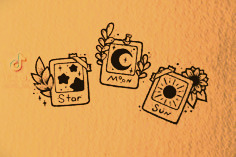

Hades Kid (Her RPer), Obsessed with the night sky and space, Will scare you to death with shadow-travel (s-t) (but Will made us stop)
(I'm also a writer, chronic reader, poet, singer, artist, and others)
Here's some of my writing (links all go to AO3, except the first)
IDOV, but on Tumblr!!!!!!
IDOV
The Solace Scripts (My take on the history of the Solace family)
Royal We (Royalty au based on IDOV, Solangelo does get more attention thou)
My Ao3
My Wattpad
Art Blog: @kas-makes-arts
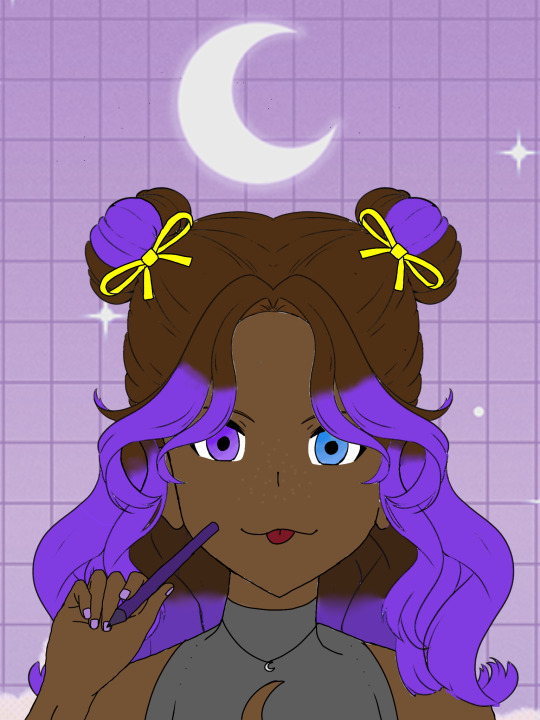
(By me)
Partner in crime *And literal partner (other RP ACC):
Quinn - @quinn-is-victory
My fam!!!! (My RP group)
Nico (Her half-brother) - @nico-sees-dead-people
Will (Her cousin) - @dr-flipflops
Aria (Her Niece) - @flipflops-n-bones
Bianca (I guess she's also her half-sister) - @the-one-who-returned

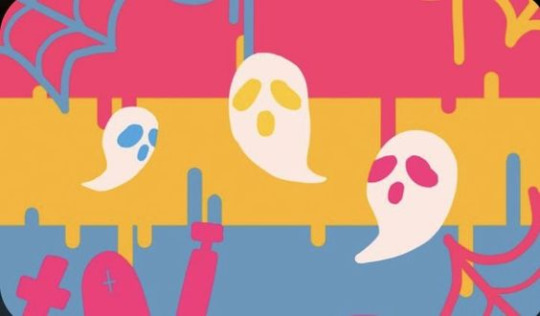
Other Stuff about me:
Birthday is November 28 (Bastille Day)
Zodiac: Sagittarius (Cancer)
Pansexual (same), no longer single (I am)
Demisexual (not, but am Alexigender)
Obsessed with the moon but could never be a huntress (same)

Texan and Spanish (African)
Dyed Purple hair (We are both natural brown), blue eyes (She wears purple contacts, I have brown eyes), dark-skinned (same), 5'3 (around same) (Ooc: Pics under isn't mine)
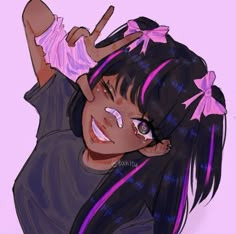
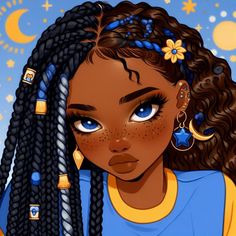
I have weaker versions of Nico and Hazel's powers cause I have it all. (No power😢)
16, claimed at 12 (14)
Has had slight feelings for the seven at some point (As in she was their biggest fan, same but I still am)
Weapon: Can't choose *Bow and Arrow, Dagger, Staff, Sword, anything in reach and her bare hands (A knife and my bare hands)

Greek (with roman influence)
Spent a lot of time in the shadows of the Argo 2 (Shes very nosy, though she doesn't tell anyone else what she sees, same but I would tell everyone)
Very good at multitasking (not very good at multitasking)
Speaks 5 langauges and can insult you in each one. (Speaks 3 languages and can insult u in 2)
Fav song is Birthday Party by AJR (my whole fucking playlist)
Has an obsession with Nutella (mug cake)


OOC: It's me, Just Kas. I'm Alexigender so any pronouns can work, though I am usually used to she and trying out they. I'm also pan and a minor, so go away weirdos. You can call me Cres or Kas, so ya that's me!!!!! (PS: Please don't send donation asks, I am a minor and they make me uncomfortable so please don't, anything sent will be deleted, thanks for your cooperation and enjoy my blog)
💜🖤💛
#the seven pjo#pjo series#riordanverse#pjo fandom#rrverse#original character#og female character#I put myself into the book#fanfic#ao3 fanfic#pjo fanfic#pjo fanart#fanart#fanfiction#percy jackson fanart#percy jackson fandom#writers on tumblr#pjo#percy jackson#nico pjo#It's Death or Victory#IDOV
103 notes
·
View notes
Text
Phillis Wheatley
Phillis Wheatley's journey began when she was seized from Senegal/Gambia at the age of seven and brought to Boston as a domestic servant. Despite her circumstances, she displayed exceptional intelligence and was taught to read and write by her owners, the Wheatley family. Her talent for poetry emerged early, and she gained recognition with her published elegy for English evangelist George Whitefield.
Facing obstacles in America, Phillis and the Wheatleys sought a publisher in London, where her collection "Poems on Various Subjects, Religious and Moral" was published in 1773, making her the first African American to publish a book of poetry. Despite her literary success, Phillis faced personal challenges, including the deaths of her benefactors and financial struggles. She married John Peters, a free Black man, but their life together was marked by economic hardship and tragedy.
Throughout her life, Phillis continued to write and express her views on freedom and equality, addressing themes of slavery and injustice in her poetry. Despite facing increasing hardship and poverty, she remained committed to advocating for social justice until her death at the age of 31.
Phillis Wheatley's legacy as a celebrated poet and voice for the oppressed continues to inspire generations, reminding us of the power of literature to illuminate the human experience and advocate for change.
#phillis wheatley#women in history#history#slavery#colonisation#enslaved#american history#us history#segregation#poetry
123 notes
·
View notes
Text
꒰ ͟͡ || ͟͡ ꒱ 𒁍 MASTERLIST⠀⠀⠀⠀⬤⬮ BALDWIN X READER FICS
"This post contains the chapters of my 2 fics published to date"
Slave to your heart completed The rose and the king in publication

°:. *₊ ° .THE KING AND THE ROSE ★ . ° ₊ *
ALLISHAH X BALDWIN IV

In a land marked by the sands of time and whispers of betrayal, a story of love, revenge, and faith unfolds. At the heart of the kingdom, King Baldwin IV, a figure shrouded in mystery and power, faces the challenges of a tumultuous world.Allishah, a young woman of celestial beauty and naive spirit, finds herself ensnared in a game of intrigue when her mother marries the infamous Reynald de Chatilleau. Manipulated by her mother's cunning and desired by all, Allishah struggles to find her own path amidst shadows that conceal secrets and broken promises List of charpers
➜ ꜝ🦢﹒ Slave to your heart ⌗
XICA x BALDWIN IV

“Xica, a beautiful slave girl, the illegitimate daughter of an African woman and a French count of white complexion, whose father was executed in his homeland. The African slave was forced to flee with her daughter to the lands of Jerusalem. But fate changes; young girls become more beautiful as time passes, more graceful. Having a beautiful body is both a curse and a blessing for a slave; it could not bring much benefit except that her beauty and the kindness with which she was blessed would help her to win over the leprous king.”
“list of chapters
Charper one
Charper Two
Charper Three
Charper Four
Charper Five
Charper Six
Charper Seven
Charper Eight
Charper Nine
Charper Ten
Charper Eleven
Charper Twelve
Charper Thirteen
Charper Fourteen
Charper Fifteen
Charper Sixteen
Charper Seventeen
Charper Eighteen
Charper Nineteen
Charper twenty
Charper Twenty One
Charper Twenty Two
Charper Twenty Three
Charper Twenty Four
Charper Twenty Five
Charper Twenty Six
Charper Twenty Seven
Charper Twenty Eight
Charper twenty Nine
Charper Thirty
Charper Thirty One
FINAL CHARPER + 3 finals

#king baldwin iv#king baldwin iv x reader#king baldwin x you#kingdom of heaven#kingdom of heaven fandom#king baldwin#king baldwin x reader#king baldwin iv x oc#kingdom of heaven 2005#the leper king#kingbaldwin#baldwin iv#baldwin#koh fandom#koh#baldwin of jerusalem#leper king#kingdom of heaven movie#kohfandom#koh fan
84 notes
·
View notes
Text
Gary Legum at Wonkette:
If there is any group of persecuted people in the world that the United States in its beneficence should take pity on, a group that our mighty nation should pull out all the stops to rescue from their tormented existence, a group worthy of us spending our unnecessarily limited financial resources on, clearly, CLEARLY, it is white people from South Africa. Ha ha, you thought we were going to say Black people in famine-riddled lands in Africa, or the poor earthquake victims in Myanmar, or the refugees fleeing political oppression and gang violence from South America, didn’t you? The same sorts of people we have spent decades trying — sometimes futilely and insufficiently, but trying nonetheless — to help in our role as the world’s great superpower. Nope, we all know how the Donald Trump administration feels about Those People. But if you’re a white South African farmer whose alleged persecution at the hands of the majority-Black nation has filled the spank banks of innumerable white supremacists over the years, it’s your lucky day. Not only are we going to recruit you to come to America, but we’re also going to open refugee centers in South Africa itself, where you can walk in, kick up your feet, complain that Oi, they stole me land!, and suddenly you’re eating hot dogs and moaning in pain every time you hear “American Pie,” like any other good, red-blooded USian. [...] Isn’t that a treat? We are revoking visas and refugee status and rounding up and selling into Salvadoran supermax any foreigner who so much as looks at an ICE agent funny. We have taken a scythe to USAID and every other agency that the nation has built since World War II to spread America’s soft power by providing food and medication and educations and clean water and shelter and God only knows what else, mostly to developing countries. We have ceded whatever leadership we might, as recently as January, have been able to offer, while China and Russia and India step in to fill the gap. [...] The whole idea that white South African farmers are an endangered group is, in a word, horseshit. The Trump administration has tried to claim they are being murdered at a high rate. They are not. The administration has claimed the majority-Black government is seizing whites’ land as some sort of revenge for decades of apartheid. It is not. And despite all the whining about the South African government seizing their homesteads, whites in the country own about half the land while making up only seven percent of the population. We’re not talking about an oppressed minority being shut out of society here. But the shibboleth that white South Afrikaners are being persecuted has been a longtime obsession of the Right, and it has permeated the mainstream of the GOP, which is now indistinguishable from a klavern of subliterate morons.
The anti-refugee Trump Regime is helping one group of refugees: White South Africans.
#South Africa#Refugees#Immigration#US/South Africa Relations#Trump Administration II#L. Brent Bozell III
12 notes
·
View notes
Text
Betty White Vs. Eartha Kitt
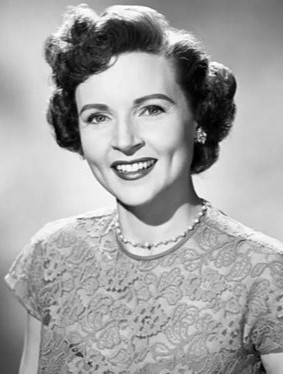
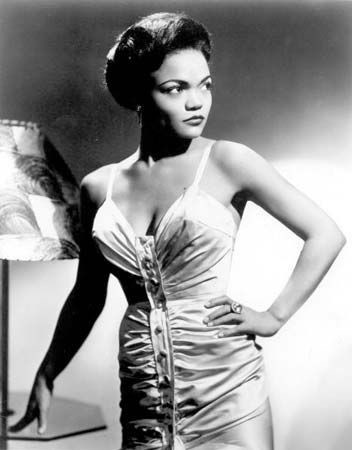
Propaganda
Betty White - (The Mary Tyler Moore Show, The Golden Girls, Life With Elizabeth) - I mean - does she really need an introduction? It's Betty White, people! The First Lady Of Television! What *hasn't* she done? She had an incredible career (in fact, she earned the Guinness World Record for the longest TV career by a female entertainer *twice*!) with an infinite list of successes - she won seven Emmys, three SAG awards, and even a Grammy. I personally know her best for her spectacular portrayal of Rose Nylund in The Golden Girls, but she's played so many great characters in her long career. A lesser known but marvelously charming role is that of the titular character in Life With Elizabeth, a 1950s sitcom which she also co-produced at the age of *28*! She was also a great advocate for a number of causes - animal welfare, gay rights (she used to accompany her friend Liberace to events to help him avoid being outed as gay), and racial equality: she famously hired Arthur Duncan, a Black tap dancer, on one of her shows, and when threatened with going off-air if he wasn't fired, she just declared "He stays, live with it." She's the whole package - amazing actress (and comedienne and producer!), kind and hilarious, and of course - beautiful! Just look at her - that smile! Those eyes! That charm!! Watch her in action if you can (they're too long to link here, but entire episodes of Life With Elizabeth are on youtube!), but honestly - her pictures alone are enough to make me swoon!
Eartha Kitt - (Batman) - No text propaganda
Master Poll List of the Hot Vintage TV Ladies Bracket
Additional propaganda below the cut
Betty White:
Have you seen her?? Look me in the eyes and tell me that Betty White's smile doesn't have the power to turn anyone's heart to mush. She looks adorable one moment, and can come up with the most out of pocket lines the next (all while still looking innocent about it). People know her best as Rose Nylund in The Golden Girls, of course, where she played the show's most naive character. But reportedly, Betty was actually the cleverest person on set. She didn't even have to learn her lines; reading the script once was enough for her, and she'd be able to remember any additional changes throughout the week without a problem. Which is pretty amazing if you ask me! Anyway, Betty is an icon. Her television career spanned seven (7!!!) decades, covering basically the entire tournament's time period (and then some!). She *almost* turned 100 and her outliving other celebrities was a Tumblr meme for ages. She had her own talkshow in the 1950s, for which she hired a female director, and had an African-American tap dancer (Arthur Duncan) as a regular cast member. When faced with criticism for the latter and the threat of being boycotted, Betty responded with "I'm sorry. Live with it" and gave Duncan *more* airtime. She was also the first woman to ever produce a sitcom (Life with Elizabeth) in which she played the lead, and looked absolutely stunning doing it. All in all: Betty was a badass, had a heart of gold, and she's absolutely stunning!
I think I might cry at how pretty she is honestly

that SMILE!!!
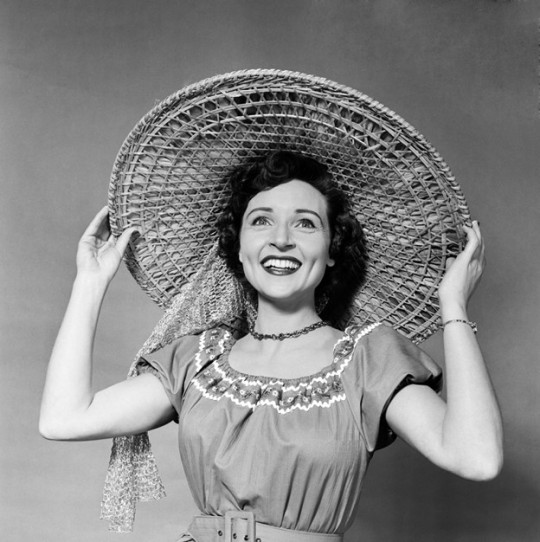
she's even pretty when she's not smiling... ahh...
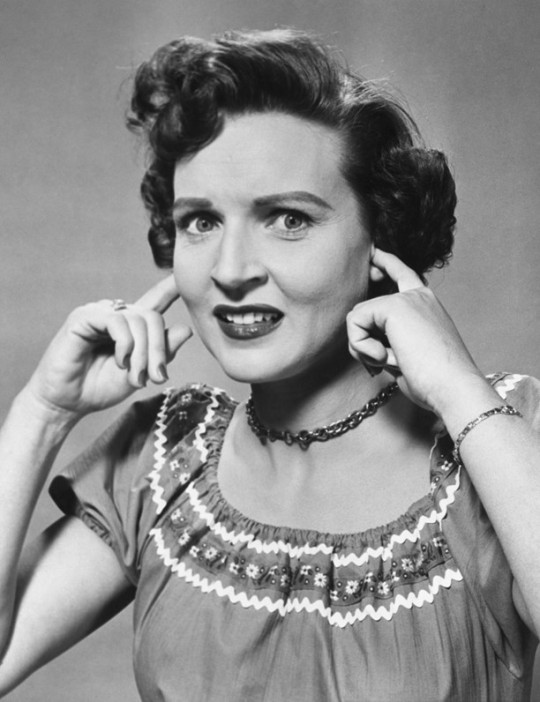
some soft butch realness
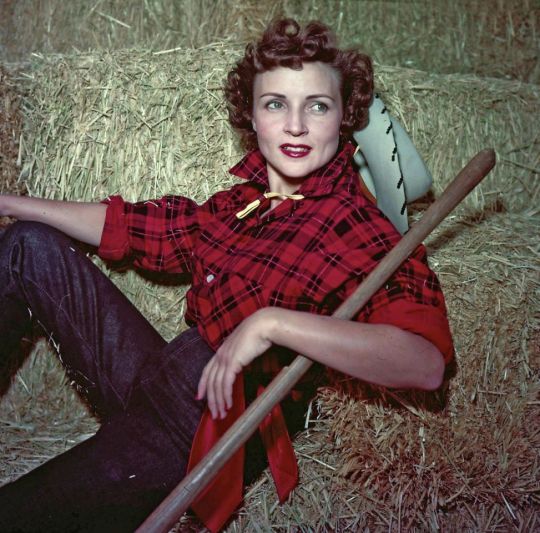
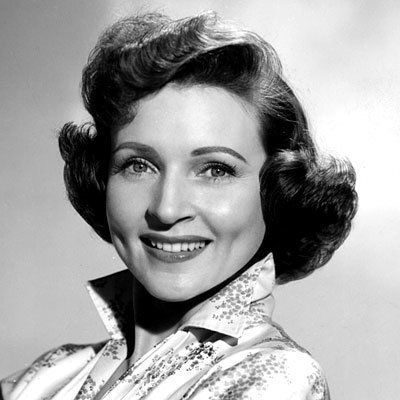
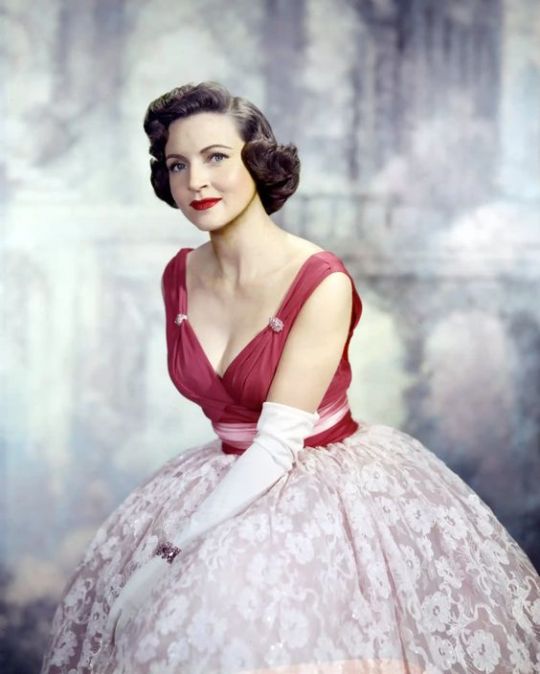
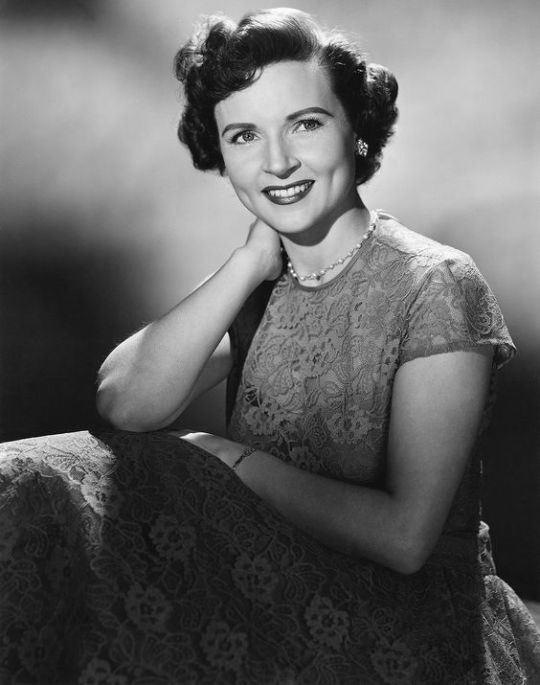
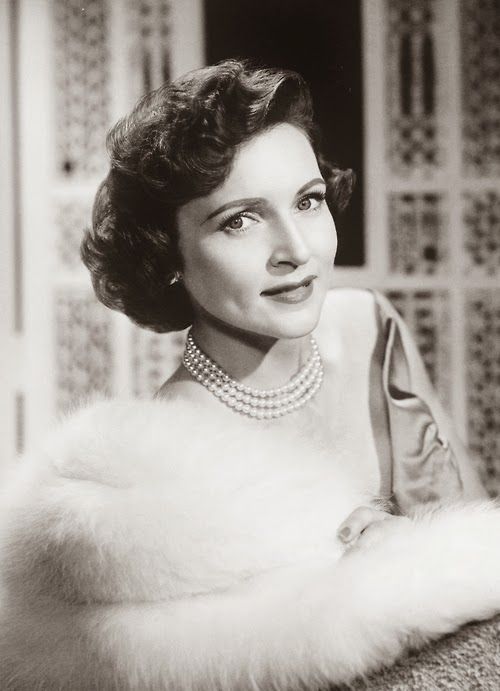


50 notes
·
View notes
Text
click the title link to DOWNLOAD This Book for FREE from THE BLACK TRUEBRARY

Would you like to find a way into the lost world and forgotten art of Hoodoo Rootwork and Conjure?
Are you looking for a modern guide on traditional African-American folk magic to cast powerful spells, craft conjuring oils and mojo bags, and build mighty altars to guarantee positive outcomes in your love life and professional endeavors?
Hoodoo was born out of sorrow and desperation, as a weapon and a defense, from the faith and resilience of the African slaves that adapted their religious tradition to the treacherous New World. As the world changed, Hoodoo adapted incorporating Native American herbal healing traditions and European religions and magical traditions, building a syncretic powerful folk magic system that works!
First prohibited, then ridiculed and commodified, Hoodoo has always been shrouded in secrecy and passed on quietly from generation to generation for fear of reprisal, contempt, and abuse and to this day is hard to find reputable sources on conjure and Rootwork. But don’t be discouraged!
I am proud to present The Hoodoo Bible: The 7-in-1 Root Doctor’s Companion to Black Folk Magic: an in-depth, all-encompassing, powerful 7-books-in-1 bundle that has recorded our rich heritage of herbal magic, traditional rootwork, and divination practices.
More exhaustive than any other book on the market, thoroughly researched and written with ease of use in mind, The Hoodoo Bible will accompany you through the spiritual path that our ancestors have beaten for us to explore the potent and practical magic of Hoodoo to claim justice, invoke protection, and find love, luck, and success.
With over 1000 authentic Hoodoo workings, these seven volumes will bring Hoodoo alive to budding rootworkers and adept practitioners alike:
The first volume will explore the history, culture, principles, fundamentals, and ethics of Hoodoo, giving you the theoretical groundwork you need to master the craft.
With the second volume the fun really begins! This practical how-to Hoodoo guide for beginners has everything you need to start practicing Rootwork and Conjure.
By the end of the third volume, you can start to call yourself a Root Doctor. With 275+ magical herbs, roots, spices, and curios, this book will help you craft powerful conjuring oils, spiritual baths and floor washes, magical teas and tonics, herb bundles and garlands to accomplish amazingly mighty Rootwork.
In the fourth volume you will find 30+ money spells, 25+ love spells, fertility spells, healing spells, and justice spells, with easy step-by-step instructions including a special chapter on inscribed spells and a complete guide on crossroads spells.
The fifth volumedelves into advanced spellcasting and conjure, teaching you how to conjure spirits, protect your home, banish your enemies, get revenge, and lay sneaky tricks. It includes a special chapter on graveyard spells and foot track magic.
In the sixth volumeyou will explore Hoodoo divination with step-by-step techniques for bone throwing, dice casting, and Hoodoo tarot. With a special chapter on dream divination and omens.
The seventh and last volume explores candle magic. This complete guide will teach you how to build an altar and use the magic of fire and the psalms to achieve your goals, be it money, success, luck, or love.
Applying Hoodoo magic to everyday life will help you achieve your goals in your private and professional life and along the way you will discover that working the roots has also sharpened your intuition, enriched your life, and prepared you for whatever may come your way.
So are you ready to discover the lost world and forgotten art of Hoodoo Rootwork and Conjure?
click the title link to DOWNLOAD This Book for FREE from THE BLACK TRUEBRARY
#The Hoodoo Bible • The 7-in-1 Root Doctor’s Companion to Black Folk Magic: Herb and Rootwork#Conjure Oils and Mojo Bags#Easy and Advanced Spells#Candle Magic and Divination to Get your Mojo Workin#HOODOO#Hoodoo Bible#African American Traditional#Root Work#Rootworkers#Conjure#THE BLACK TRUEBRARY
26 notes
·
View notes
Text
Politics of the False Peace
In the aftermath of the Final Armistice, the political state of the world has entered a new era, city-states vying for economic and material dominance over their fellows, doing whatever is necessary to secure an advantage, often at the point of a tinman's gun.
However, this does not mean that there is only animosity between these bastions of civilization. In fact, in this new time, some regions have soared to new heights of prosperity, enjoying mutual benefit and cooperation at levels undreamt of even before the days of the Long War.
However, these alliances are not the forces for peace they might first appear. On a global level, these great economic unions embody the same power-jockeying of the City-States, only on a much greater scale. Instead of fighting over mineral rights and salvage zones, these great unions fight over entire city-states, and the millions upon millions of lives therein.
Perhaps the greatest among them is the North African Economic Union (NAEU). Currently counting 5 of the world's wealthiest and most influential City-States in the world, as well as the backing of Kultivar, the largest Megacorp on the African continent, it is a true juggernaut of international trade, and their control over the southern Mediterranean and North Africn regions are near-complete.
their only rival for dominance on the continent is the alliance known as the Central African Prosperity Sphere (CAPS), a coalition of 8 city-states united in mutual defense and trade treaties. While the NAEU regardss the CAPS as a threat to their economic dominance, the CAPS is largely content to mind its own affairs, only engaging in defensive maneuvers unless absolutely necessary.
Another enemy of the NAEU is the european-based Mediterranean Economic Alliance, the only other major power to hold sway in the Mediterranean Basin. While on the surface the MEA seems much like the NAEU, an economic treaty organization between powerful economic City-States, in truth, the MEA is a poisoned olive branch, used by the City-State of Madrid to ensnare and dominate its neighbors. Despite the iron grip the City-State holds over its fellow members, there is a strong resistance movement, which some suspect to be backed and bankrolled by NAEU members.
Next is the Atlantic Trade Network, an alliance of several North and Central American and European city-states and corporations, and serves as trade agreement, non-aggression pact, and mutual defense treaty. This is largely backed up by the military force of Saffron, the largest security contractor on the European continent.
Another major alliance on American soil is the Steinhauser Pact, a group of seven city-states who all submitted to having their security and government managed by the Steinhauser Corporation. While the terms of the agreement are strict, none of the members are in much of a position to protest, as between the extremely harsh environments of the post-war pacific coast region and the extreme prevalence of scavenger and raider settlements, security is a necessity for any City-State in the North American west.
To the west, on the largest island of the Hawaiian Archipelago, lies the City-State of Hawaii, which exists as perhaps the most powerful single city-state in the world. This is because of the presence of Alulani Bulk Transport, a megacorp which controls more than 80% of trade in the pacific region.
Finally, there is the topic of South America. While no major alliances have been formed, besides temporary ones of convenience and desperation, there is a reason for this. South America plays home to some of the largest naturally existing deposits of Esoteric Matter in the world, and this has attracted the attention of corporations far and wide. With such massive prizes to be won, animosity between city-states runs rampant, and the Knights forces stationed in the area are in a near-constant state of readiness for the delicate balance of power in the area to come crashing down.
If there's any questions, gaps in my explanation, or questions you'd just like to ask, please feel free! I'm always ready to talk about this setting at the drop of a hat.
9 notes
·
View notes
Text







The name death's-head hawkmoth refers to any of three moth species of the genus Acherontia (Acherontia atropos, Acherontia styx and Acherontia lachesis). The former species is found throughout Africa and in Europe, the latter two are Asian; most uses of the common name refer to the African species. These moths are easily distinguishable by the vaguely human skull-shaped pattern of markings on the thorax. They are large nocturnal moths with brown and yellow or orange coloring, and all three species are fairly similar in size, coloration and life cycle.
The African death's-head hawkmoth (Acherontia atropos) is the largest moth in the British Isles (though not in Africa), with a wingspan of 13 cm (5 in); it is a powerful flier, having sometimes been found on ships far from land. The forewings are a mottled dark brown and pale brown, and the hind wings are orangey-buff with two narrow dark bands parallel with the hind margin. The abdomen is a similar orangey-brown, with a broad, dark dorsal stripe. The most notable feature is a patch of short yellowish hairs on the thorax that gives the impression of depicting a human skull. It is a striking insect, but is seldom seen because it flies late in the night.
A 2020 study describes how, when viewed upside-down, Acherontia atropos creates an illusion of a head with eyes: the mark on its thorax likened to a human skull is the "nose", with the skull's eye-sockets resembling nostrils. Spots on its forewings can be seen as eyes, and various other markings and features can be interpreted as ears, muzzle and lips. This illusion is also present in Agrius convolvuli (convolvulus hawk-moth) and five other species, with the study author suggesting that the function of the illusion of an eyed head is "almost certainly to deter, distract or otherwise deceive predators".
The caterpillar of the African death's-head hawkmoth is also sturdy and somewhat variable in colour, being some shade of buff, green or brown, with seven diagonal blue lines. At the rear is a curved, thorn-like horn. It can attain a length of 5 to 6 in (13 to 15 cm). The other two species of death's-head hawkmoth similarly have three larval color forms: typically, green, brown and yellow. The pupa is stout and reddish-brown, and is formed 8 to 10 in (20 to 25 cm) under the ground in a chamber the size of a large hen's egg.
These moths have several unusual features. All three species have the ability to emit a loud chirp if irritated. The sound is produced by inhaling and expelling air, which vibrates the epipharynx like an accordion, often accompanied by flashing of the brightly colored abdomen in a further attempt to deter predators. The chirp of the death's head hawkmoth takes approximately one-fifth of a second. A study by National Geographic found that the epipharynx was originally built to suck up honey, but later evolved to produce sound.
Adults of all three species are commonly observed raiding beehives of different species of honey bee; A. atropos only invades colonies of the well-known western honey bee, Apis mellifera, and feeds on both nectar and honey. They can move about in hives without being disturbed because they mimic the scent of the bees and are not recognised as intruders. If their disguise is discovered, the moth's thick waxy cuticle helps to protect it against stings.
Leaves of the potato plant contain calystegines, a group of polyhydroxy alkaloids, which are toxic. The larva of A. atropos feeding on potato foliage accumulates these alkaloids.
#animals#wildlife#deathmothblog#nature#beauty of nature#death moth#moth#tumblr fyp#for you#interesting
28 notes
·
View notes